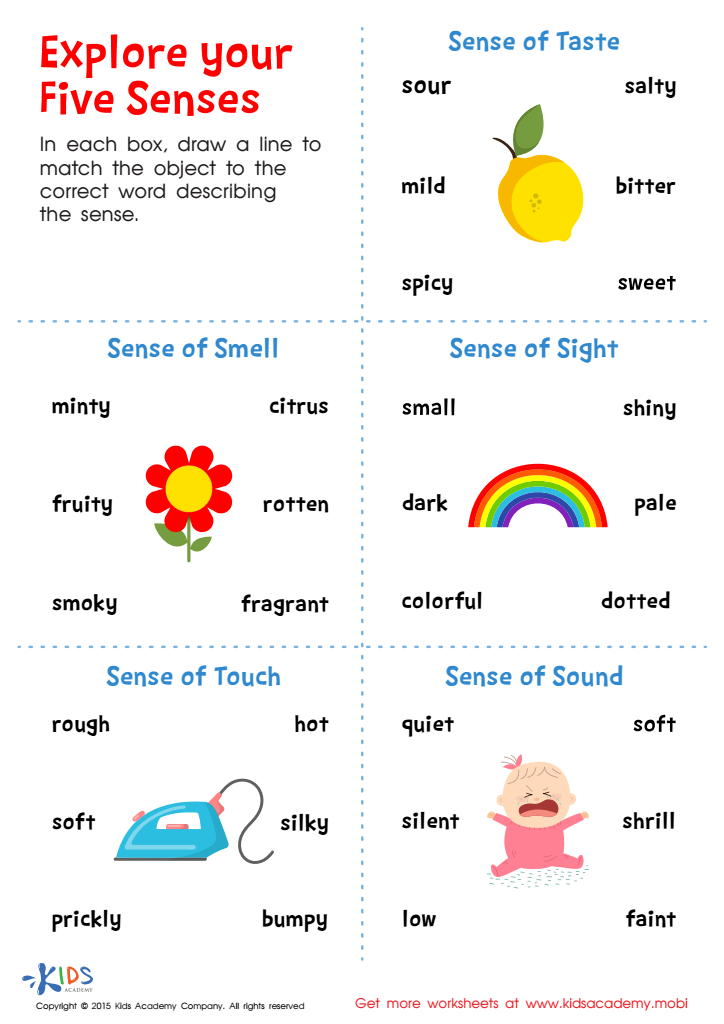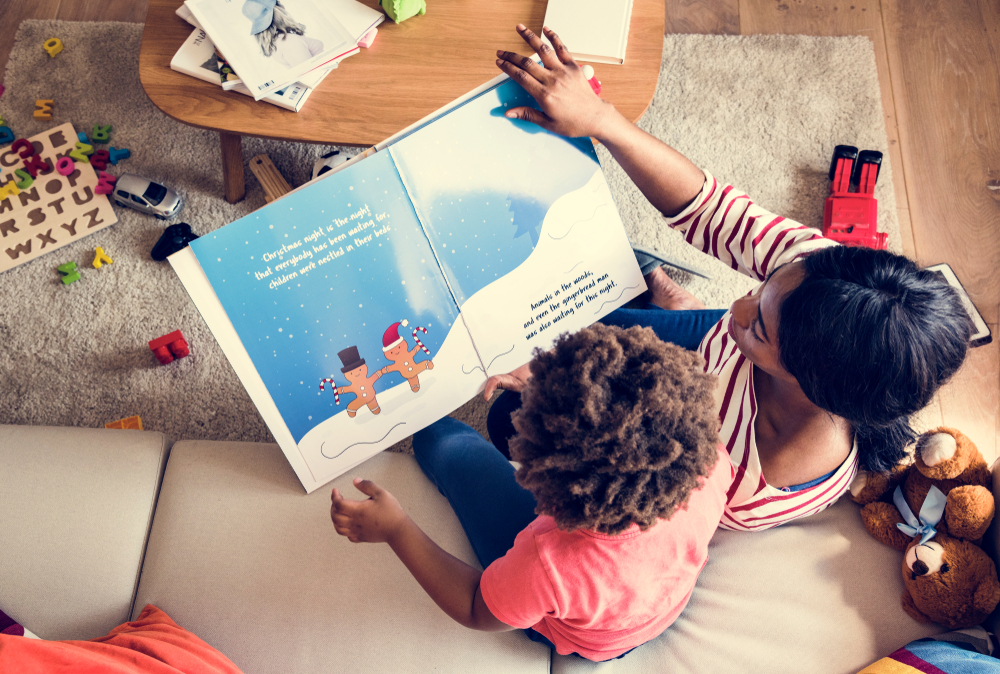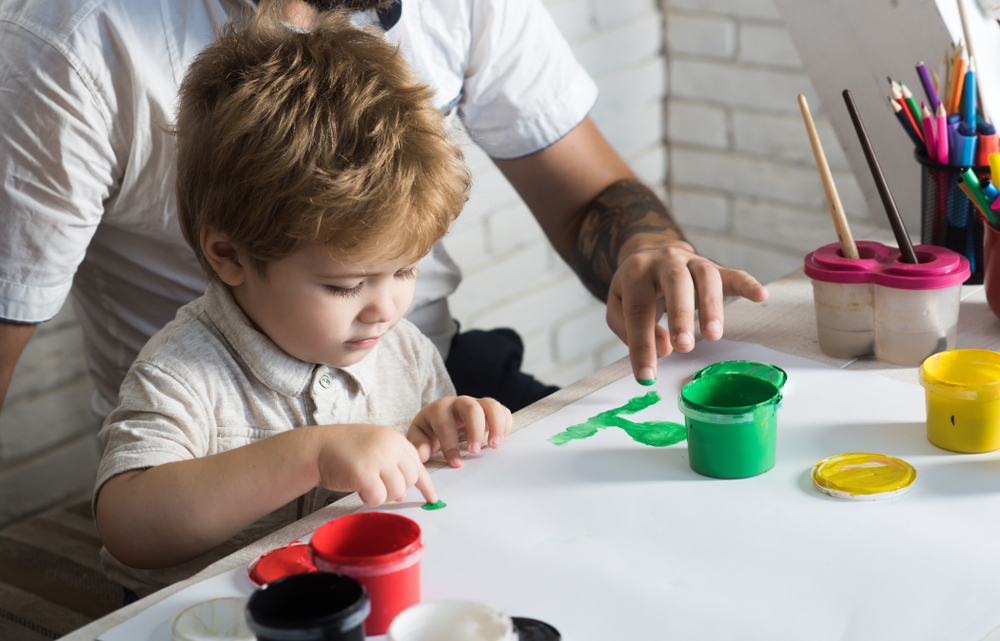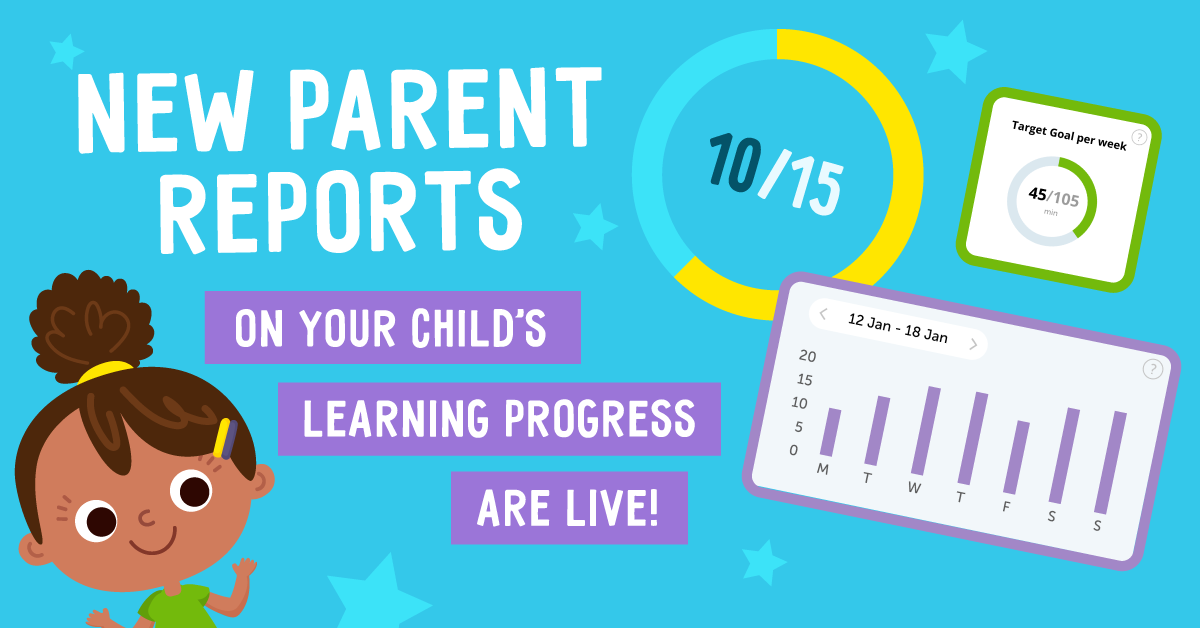Associating senses with actions Worksheets for Kids
1 filtered results
-
From - To


Explore Your Five Senses Printable
Question/Answer
Why is the Associating senses with actions skill important for Kindergarten students?
The Associating senses with actions skill is crucial for Kindergarten students as it helps them understand and interact with their environment more effectively. This foundational ability enhances cognitive development, improves problem-solving skills, and supports the learning of complex concepts by linking sensory experiences with physical actions, fostering a more integrated and hands-on approach to learning.
How to train the Associating senses with actions skill in Kindergarten students learning about The 5 Senses?
To train Kindergarten students in associating senses with actions, engage them in interactive activities like sensory stations where they match actions such as smelling flowers, tasting fruits, listening to music, touching different textures, and looking at various colors. Encourage discussions on what they experience through each sense to reinforce the connection between senses and actions.
How to test a Kindergarten student’s Associating senses with actions skills?
To test a Kindergarten student's associating senses with actions skills, engage them in activities where they must match common actions with the corresponding senses. For example, ask them to connect smelling to sniffing a flower, tasting to eating, hearing to listening to music, seeing to watching a bird, and touching to feeling the texture of a fabric.
 Assign to the classroom
Assign to the classroom












